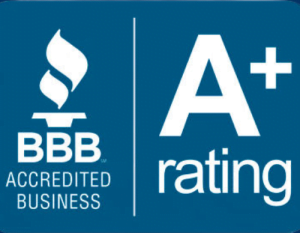Tankless water heaters are a superb option for homeowners seeking simplicity, affordability, and energy conservation. Compared to traditional water heaters, they typically reduce energy consumption by up to 35%, leading to significant savings on your monthly utility bills. Moreover, their small dimensions aid in maximizing floor area in basements, laundry spaces, and other locations where water heaters are positioned.
Another advantage of tankless water heaters is their long-lasting nature; they typically have a lifespan double that of conventional models.
However, maintaining a tankless water heater can be more challenging than a traditional one. The difficulty of flushing and descaling these units varies, depending on the hardness of your home’s water. This guide will outline our recommended procedure for descaling a tankless water heater.
You might also want to read:
Tankless vs Storage Water Heater
Why Do Tankless Water Heaters Need To Be Descaled?
Scale builds up more slowly in a tankless water heater than in a traditional tank. However, this buildup still impacts the heater’s performance. The scale clogs the heating elements, reducing their effectiveness.
Over time, this accumulation forces the heat exchanger to use more energy to heat the water, which may eventually restrict water flow. Without regular maintenance, the buildup can erode the walls of the tankless water heater, potentially leading to the need for replacement.
How Often to Descale a Tankless Water Heater

The frequency of descaling a tankless water heater depends on several factors: The mineral content of your water, the set water temperature, and your household’s hot water usage. If you have the necessary equipment, materials, and skills, you can descale the heater yourself or hire our tankless water heater expert. We advise performing descaling on the tankless water heater at least once annually. However, this may fluctuate depending on the previously mentioned elements.
Benefits of Regularly Descaling Your Tankless Water Heater.
It’s crucial to de-scale your tankless water heater regularly for its upkeep and functionality. Eliminating scale accumulation and mineral residues guarantees efficient performance, durability, and a steady hot water supply in your household. Here are the primary benefits of descaling your tankless water heater:
- Maintains Efficiency
Scale buildup on the heat exchanger can impede heat transfer and reduce the efficiency of your tankless water heater. Descaling removes these deposits, allowing the unit to heat the water more effectively and maintain energy efficiency. This not only helps reduce energy costs but also ensures a reliable supply of hot water.
- Enhance Efficiency
When scale accumulates on the heat exchanger, it creates a barrier that inhibits heat transfer, leading to fluctuations in the water temperature and reduced heating performance. Descaling your tankless water heater removes these obstructions, resulting in consistent and reliable hot water delivery throughout your home.
- Prolong Lifespan
Scale accumulation can significantly shorten the lifespan of your tankless water heater. In the long run, the extra stress from the scale can result in early deterioration, leading to malfunctions and costly repairs. Regular descaling helps maintain the longevity of your unit, preventing unnecessary damage and ensuring optimal performance for many years.
- Minimizes Clogs and Damage
The pipes and valves in your tankless water heater can become clogged, reducing water flow and damaging internal components. Regular descaling helps reduce the risk of clogs and expensive repairs, ensuring smooth operation with a continuous hot water supply.
How to Descale Your Tankless Water Heater
It is advisable to seek help from a water heater expert to access your tankless water heater. Tankless water heaters are typically installed within the walls of your home, making disconnection and reconnection for descaling a complex task better suited to someone with expertise in the system.
- Materials Needed to Descale a Tankless Water Heater:
- A five-gallon bucket.
- The recommended tankless water heater descaling chemical is food-grade approved.
- Two ¾ inch drain hoses.
- A circulation water pump.
- Power down the unit and turn off the gas valve.
- Turn off both the hot and cold water valves and remove the drain caps from both valves. Place a 5-gallon bucket on the side, filled with water. Carefully turn the red drain valve to the "on" position and drain any remaining water into the bucket.
- Repeat the same procedure for the cold water side.
- Attach a line to the submersible pump and set it in a five-gallon bucket. Keep the power wire out of the bucket.
- Attach the pump discharge hose to the cold water release valve.
- Fasten a drain hose to the hot water drain valve and position the hose’s end into the bucket.
- Pour the Descaling chemical into the bucket, ensuring the pump is fully submerged. Turn both handles of the isolation valves to open the drain and operate the pump for at least one hour, To achieve the best outcome.
- Following a minimum of one hour, switch off the pump and shut the cold water drain valve. Detach the hose from the cold water drain valve and put the cap back on the valve outlet.
- Remove the pump and drain hose from the bucket and dispose of the liquid. Position the hot water drain hose into the empty bucket and open the primary cold water valve. This action will rinse the heater with new, cold water. Keep rinsing for at least five minutes.
- position a bucket beneath the unit and unlock the drain valve directly below the water heater to empty any leftover descaling solution. Rotate the primary intake valve to the "closed" position.
- For additional maintenance, remove the water filter for cleaning. Some water may spill out. Wash the filter under flowing water to eliminate any leftover dirt. Reinsert the dry filter, ensuring it is tightly secured by hand.
- Turn the drain valve to the "off" position. Detach the drainage pipe and reinstall the drain plug, ensuring it is firmly fastened.
- Turn the main hot and cold water valves back to "on" and the gas supply back on.
What Happens if You Neglect to Descale Your Tankless Water Heater?

Skipping the descaling routine with your tankless water heater can lead to severe issues. Mineral deposits can build up, causing damage to your heat exchanger and disrupting normal heating functions. Furthermore, a malfunctioning heat exchanger can overheat the water in your system, resulting in damage and premature failure of your tankless water heater.
DIY vs. Hiring a Professional for Tankless Water Heater Descaling

When descaling your tankless water heater, you have two choices: doing it yourself or hiring a professional. Each decision has its advantages and disadvantages, so it’s crucial to consider your skills, background, and ease before making a decision.
Descaling your water heater on your own can be economical if you possess some understanding and expertise in HVAC. Various descaling kits on the market provide the necessary tools and instructions. By following the step-by-step instructions, you can de-scale your water heater.
On the other hand, hiring a professional assures that the descaling procedure is completed accurately and efficiently. An experienced HVAC contractor has the necessary skills and knowledge to complete the task and can spot any problems or complications. Employing an expert spares you time and energy., mainly if you are busy or lack trust in your abilities.
Advantages and Disadvantages of Self-Installation vs. hiring a Professional for Tankless Water Heater Descaling
DIY Descaling: Pros:
- Economically efficient
- Chance to acquire knowledge and expertise
- There is no requirement to arrange a meeting
Cons:
- Requires some HVAC knowledge and experience
- Time-consuming
- Potential for mistakes if not done correctly
Hiring a Professional: Pros:
- Expertise and experience
- Ensures proper and efficient descaling
- Easier and more convenient
Cons:
- Costly compared to DIY
- Dependent on professional availability
- Reliance on external service provider
You have the choice between descaling your tankless water heater alone or hiring a professional, depending on your circumstances and individual inclinations. DIY descaling can be rewarding if you’re confident in your abilities and have the time and resources to dedicate to the task. However, hiring a pro is the way to go if you prefer the assurance of a water heater installer’s expertise and want to save time and effort.
Do You Need to Schedule Tankless Water Heater Maintenance?

It’s essential to maintain your tankless water heaters. This includes flushing them at least once a year. You may also need to clean the unit’s exterior more frequently, especially if it collects dust.
While you can handle basic maintenance, our team is here to assist you. Knowledge HVAC & Refrigeration is happy to schedule routine descaling and yearly servicing for tankless and standard water heaters. Contact Knowledge HVAC & Refrigeration today for an estimate!







